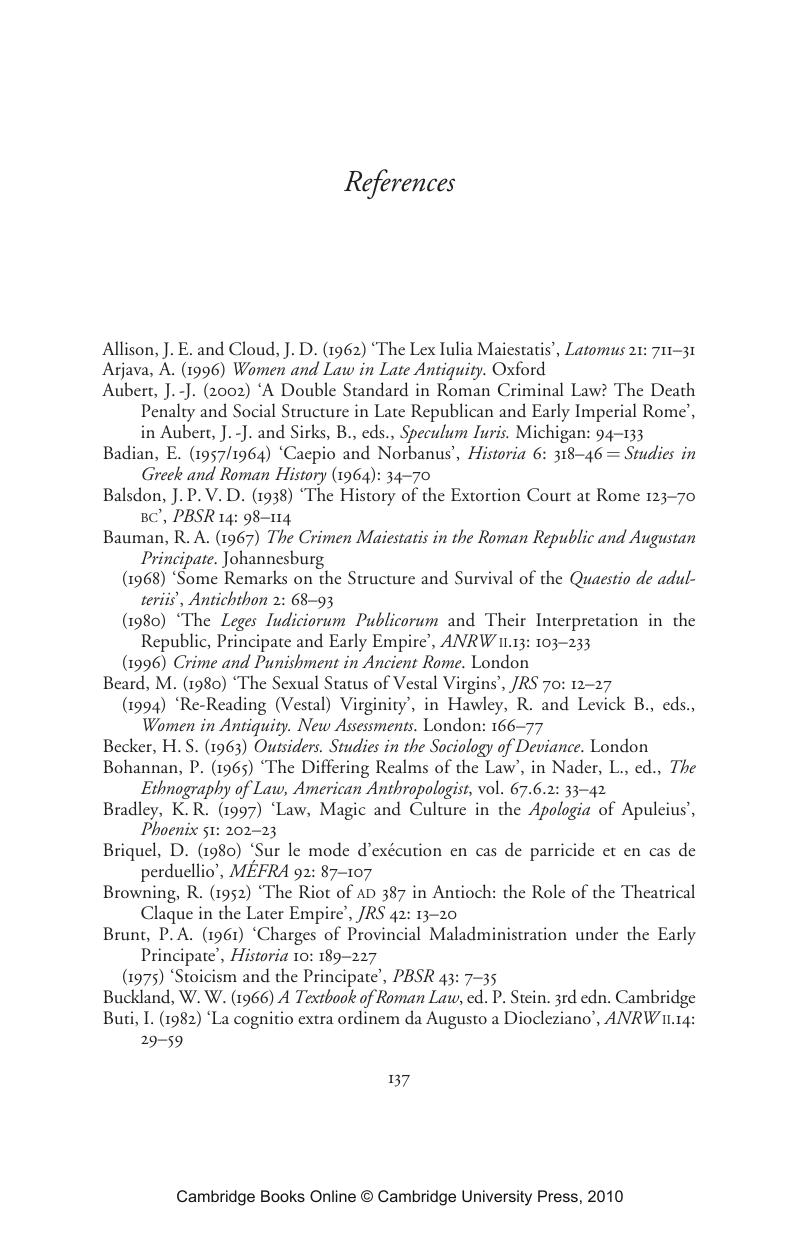Book contents
- Frontmatter
- Contents
- Preface
- 1 Competing discourses
- 2 Public process and the legal tradition
- 3 Cognitio
- 4 The thief in the night
- 5 Controlling elites I: ambitus and repetundae
- 6 Controlling elites II: maiestas
- 7 Sex and the City
- 8 Remedies for violence
- 9 Representations of murder
- Bibliographical essay
- References
- Index
- References
References
Published online by Cambridge University Press: 05 June 2012
- Frontmatter
- Contents
- Preface
- 1 Competing discourses
- 2 Public process and the legal tradition
- 3 Cognitio
- 4 The thief in the night
- 5 Controlling elites I: ambitus and repetundae
- 6 Controlling elites II: maiestas
- 7 Sex and the City
- 8 Remedies for violence
- 9 Representations of murder
- Bibliographical essay
- References
- Index
- References
Summary

- Type
- Chapter
- Information
- Law and Crime in the Roman World , pp. 137 - 142Publisher: Cambridge University PressPrint publication year: 2007

